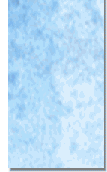 |
![]()
As a photographer whose goal is to represent the wonders of the natural world, I want to address the issue of image editing; the adjustments made to a photograph after it is taken. Do I do it? If so, why and how much?
Well, for as long as there has been photography there has been photo editing, first in the dark room, now, with powerful software. The question isn't whether or not to edit images but, rather, to what end to edit images.
Some photographers edit their images to get them as close as possible to what they saw, striving to overcome the limitations of the camera, the film or light sensor and the printing process. Some photographers creatively manipulate and combine images so as to tickle our fancy, delight the eye, move our soul...whatever. Others change images to improve their sales, slyly adding orange to plain sunsets, copying full moons into blank skies and so on. I am in the first camp, enjoy the work of those in the second camp and, I've gotta say it, disapprove of the third (unless they acknowledge their manipulation alongside their work).
I feel very strongly about the honesty of nature photography because of the importance I see in nature's ability to touch our hearts, to transport us with its beauty. People are, of course, of nature so it only makes sense that we should respond to it in a meaningful way. Indeed, the response we feel to nature's vitality, chaos, peace and beauty is the resonance that affirms our place in the wondrous pattern of creation. The awe and pleasure that we feel in nature are able to break through, to melt away, habits of perception based on our own, sometimes less harmonious, constructs. This is key to our individual well-being and to our true understanding and appreciation of the natural world. A world which now hangs in the balance, dependant on our clarity of perception and prompt action to survive in a cohesive, livable form.
As with music, a good 'recording' of nature can touch us just as the real thing would. That's why I take exception to sneaky photographers gilding the lily without saying so. Knowing that counterfeit images are around can erode our certainty in the reality of any image that we see. This can undermine our confidence in the resonance that we feel with these beautiful images and, accordingly, in the natural orientation that they afford us.
So, how do I adjust my images?
My editing falls into three categories:
Light and shadow.
The most common adjustments I make are to overcome the contrast limitations of film because film is unable to capture the range of light that our eyes can. A photo that is properly exposed for a bright sky will have shadows that are too dark. One that shows the shadows properly, will have an overexposed sky. Typically, I will take a series of exposures of the same image then, back on my Mac, work on the one that best shows the bright areas; lightening the shadows until they match the shot where they were properly exposed. In extreme cases, where the shadows can't be lightened without distortion, I'll merge two differently exposed images. The combination of the two gets me closer to what I saw than either of the original shots.
Composition.
Say, out in the field, I painstakingly position my camera, using the branches of a tree in the foreground to hide something in the distance, like the lights of a distant town or the edge of a clearcut. Later, back home, I find that in the shot with the best exposure a breeze has moved a branch a little, revealing a couple lights or a bit of the clearcut. Rather than fight to improve a less well exposed shot, I will alter the properly exposed shot, referring to the other as my guide. Similarly, in a case where my composition is marred by a small, out of context, branch jutting into the frame, rather than breaking it off the tree, I'll remove it later on the computer. It seems best to let the tree be if I can.
Printing.
This one can drive you crazy. The ugly truth is that inks simply can't reproduce all the colours that we can see, capture with a camera and show on screens. So, after I edit an image to my satisfaction in RGB (red, green and blue; the colours blended to portray the visible spectrum on screens) I have to convert the photo to CMYK (cyan, magenta, yellow and black; the colours blended to print images). The software enables me to preview which colours will not print accurately, because they are 'out of gamut'.
Often, everything is just fine. Sometimes, it's a little off, but converts so well that it's not a problem. Other times, it's awful. The brilliant blue sky is entirely out of gamut; the rich green where the sun hits the grass is gone; the intense orange, tinging the clouds with fire, is no more. It's impossible for me to 'tell the truth' of what I saw. The battle begins; to see how close to the truth I can get. I carefully select the problem colours and push them ever so slightly, this way and that, repeatedly checking the preview. Sometimes the compromises turn out to be minor. In other cases, I have to accept that, while I've gotten close to the truth, no one will ever see a printed version of the image that can convey the full magic that I witnessed.
The bottom line is that I do my best to show the truth of what I've seen. I believe that nature deserves no less.
Terry McTavish